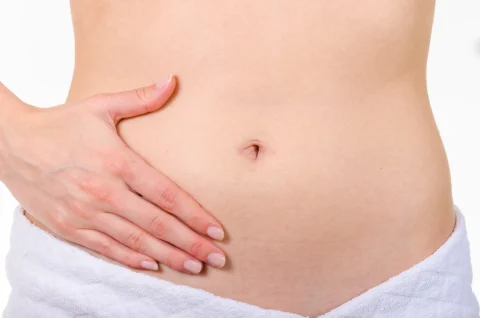Hormone pellets are tiny implants placed under the skin to deliver consistent doses of hormones over extended periods of time.
They have emerged as an effective option for hormone replacement therapy (HRT) to treat conditions related to hormonal imbalances in men, women, and transgender individuals.
But how do hormone pellets work? What conditions can they help treat? And what risks should you know about before considering this therapy?
This comprehensive guide examines the benefits, risks, and applications of hormone pellets.
What Are Hormone Pellets?
Hormone pellets are tiny pellets, about the size of a grain of rice, made of crystallized hormones.
A healthcare provider inserts the pellets just under the skin through a quick and minimally invasive procedure. The pellets then dissolve slowly to release consistent doses of hormones into the bloodstream.
The pellets contain either testosterone, estradiol, or a combination.
- Testosterone pellets treat conditions related to low testosterone levels in men and transgender women.
- Estradiol pellets help relieve menopause symptoms in cisgender and transgender women.
- Custom-compounded pellets may include progesterone or DHEA in addition to testosterone or estradiol.
Once inserted under the skin, hormone pellets typically provide steady hormone levels for 3-6 months before needing replacement. This contrasts with other delivery methods like gels, patches, pills that require daily administration.
Hormone Pellets for Men
Many men experience declining testosterone levels as they age, resulting in symptoms like low energy, decreased muscle mass, weight gain, and reduced libido. Hormone pellets can provide testosterone replacement to help alleviate these symptoms.
Conditions Treated by Testosterone Pellets in Men
Testosterone pellets primarily treat andropause or ‘male menopause,’ which occurs when testosterone levels drop with aging, causing symptoms like fatigue, mood changes, and loss of sex drive.
Pellets may also alleviate hypogonadism resulting from testicular disorders, pituitary tumors, or other medical conditions causing low testosterone.
Men experiencing metabolic syndrome – a cluster of conditions like high blood pressure, high blood sugar, and excess abdominal fat – may also benefit from testosterone pellet therapy.
Benefits of Testosterone Pellets for Men
Clinical studies suggest testosterone pellets can provide several benefits for men with low testosterone:
- Increased energy and stamina
- Improved libido and sexual performance
- More muscle mass and strength
- Decreased body fat
- Better mood and cognitive function
- Stronger bones
- Improved heart health
These pellets deliver consistent testosterone levels, avoiding the peaks and troughs of shots or gels that can cause side effects.
Risks and Side Effects of Testosterone Pellets
As with any medication, testosterone pellets have some risks and side effects to consider:
- Acne or oily skin
- Breast enlargement
- Fluid retention
- Sleep apnea
- Higher red blood cell count
- Prostate enlargement
- Testicular atrophy
- Infertility
There are also small risks related to the insertion procedure, like infection, pellet extrusion, or pellet fragmentation. Working with an experienced provider reduces these risks.
Hormone Pellets for Women
Women may take advantage of hormone pellets containing estrogen and progesterone to manage menopause or perimenopause symptoms related to declining estrogen.
Managing Menopause with Estrogen Pellets
For women going through menopause, estrogen and progesterone hormone pellets can provide an effective way to get relief from symptoms like:
- Hot flashes
- Night sweats
- Vaginal dryness
- Mood swings
- Sleep disturbances
Estrogen pellets help restore more consistent hormone levels to alleviate these symptoms. Women often report symptom relief within days that lasts over months of steady hormone release from the pellet implants.
Benefits for Perimenopausal Women
Some premenopausal and perimenopausal women dealing with irregular periods, PMS, or other hormonal issues may benefit from estrogen pellets to regulate hormone levels. However, research on pellets in this population is limited, and off-label use requires close medical supervision.
Risks of Estrogen Pellets for Women
While generally safe, estrogen hormone pellets do carry some risks:
- Breast tenderness
- Headaches
- Irregular uterine bleeding
- Increased risk of endometrial cancer if used without progesterone
- Blood clots (rare)
Compounded bioidentical hormone pellets also lack FDA regulation, posing uncertain risks with long-term use.
Hormone Pellets for Transgender Individuals
Both transgender men (assigned female at birth) and transgender women (assigned male at birth) may use hormone pellets to assist with gender-affirming hormone therapy.
Pellets for Feminizing & Masculinizing HRT
Testosterone pellets serve as a masculinizing hormone therapy for transgender men, while estrogen pellets provide feminizing hormone therapy for transgender women.
Pellets offer reliable, steady dosing of hormones to assist with developing the secondary sex characteristics associated with the individual’s gender identity.
This includes changes like voice deepening, facial hair growth, breast development, or fat redistribution.
Advantages Over Other Gender Affirming Hormone Therapy
For transgender individuals, pellets offer unique advantages:
- Steady hormone levels without peaks and troughs
- Potentially fewer injections than shots
- Improved patient compliance and monitoring
- Gradual physical changes may better align expectations
However, pellets may not be suitable for non-binary people desiring partial feminization or masculinization effects.
Special Considerations for Transgender Individuals
Transgender patients using hormone pellets should partner with healthcare professionals experienced in transgender medicine.
Providers monitor therapy to avoid excessively high hormone levels while ensuring adequate levels for desired effects. Lifelong medical supervision provides the best results.
Additional Factors to Consider
Beyond their benefits for men, women, and transgender individuals, hormone pellets also come with other general considerations.
Finding an Experienced Provider
It’s vital to locate a qualified provider with expertise in pellet hormone therapy and HRT for your specific needs. Confirm they have specialized training in administering pellets. Also verify they fully assess your health history and risks before recommending hormone pellets.
Cost of Hormone Pellet Therapy
The cost of hormone pellets varies based on formulation, hormone dose, provider fees, and insurance coverage. However, patients may expect to pay $250-$500 per insertion, or $1000-$1500 annually. Verify insurance coverage and projected costs before starting therapy.
Alternatives to Hormone Pellets
While hormone pellets offer the convenience of consistent hormone levels for several months, other options provide greater flexibility in dosage and administration:
- Gels and creams: These allow for daily adjustments in hormone levels, making them adaptable to your changing needs.
- Patches: These provide a steady release of hormones through the skin and require changing only once or twice a week.
- Pills: A traditional method for hormone delivery, pills are a familiar option for many.
- Injectable hormones: For those who prefer less frequent administration, injections deliver hormones at intervals ranging from weekly to several months.
It’s important to discuss these alternatives with your healthcare provider to determine the best hormone delivery method suited to your individual needs and preferences.
The Takeaway
While not right for everyone, hormone pellet therapy is a convenient and effective option for men, women, and transgender individuals seeking the benefits of hormone replacement.
But like any medical treatment, hormone pellets come with some risk. Working with an experienced provider, understanding the benefits and risks, and considering alternatives allow for an informed decision about this therapy.










